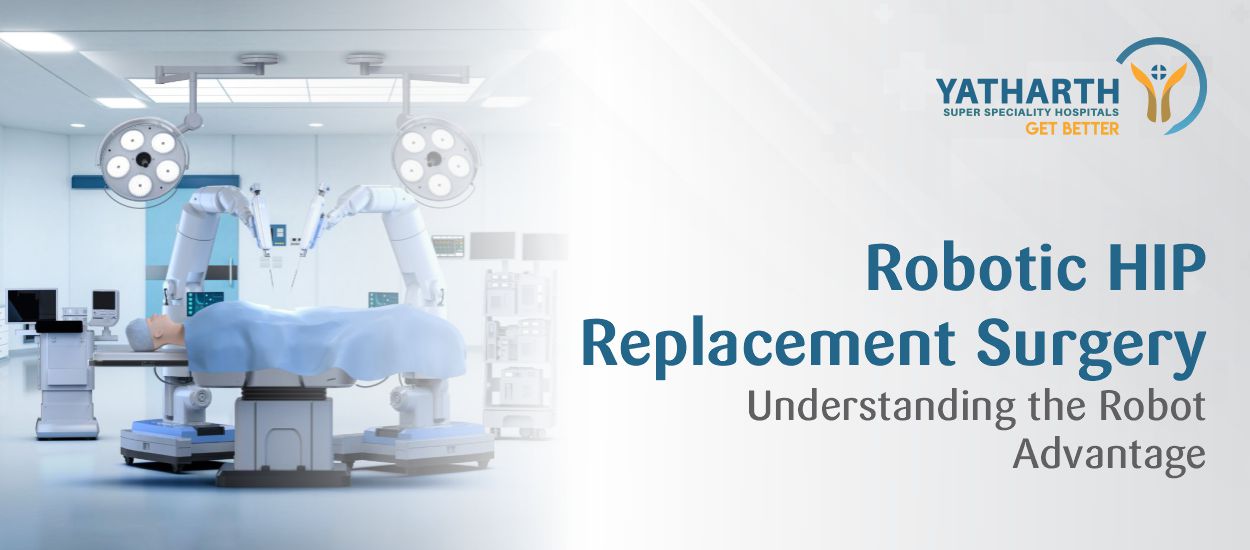Overview
As a person’s age advances, the hip joint may undergo some wear and tear because of arthritis or other degenerative conditions or due to overuse, accident or injury. In the absence of a healthy hip joint, the person can have restricted movement, making him/her feel uncomfortable. In such situations, robotic hip replacement can be a treatment of choice to revitalise the hip joint and keep an individual mobile for years. In these cases, robotic hip replacement provides several advantages over traditional manual joint replacement surgery.
To begin with, robotic hip replacement surgery is based on a patient’s specific anatomy. With a CT scan, a 3D model of the person’s joint is created. Using a software programme, the surgical team will prepare a pre-procedure plan according to the actual structure of the person’s hip. In this way, doctors can virtually plan the surgery before performing it physically. In essence, since this robotic joint replacement surgery is based on a specific person’s anatomy, an exact virtual model is created so the surgical team is ready in advance.
Traditional versus Robotic Hip Replacement
Traditional and robotic hip replacement have similarities since the surgical team removes damaged bones and tissue in the hip, which is replaced with an artificial joint. The only difference is the robotic procedure is done via a robotic arm that allows much greater precision.
However, replacing hips manually has disadvantages. Although most procedures succeed, some may go wrong if the new limb is either shorter or longer than the other one. Robotic hip surgery eliminates this risk since these procedures have tremendous success rates and ensure a drastic decrease in downtime. Research indicates robotic surgery is five times more efficient in matching limb length than traditional procedures.
Advantages of Robotic Joint Replacement
Here are some of the specific advantages of robotic hip replacement:
1. The use of computer imaging:
As explained earlier, an accurate 3D model of your hip will be created so that a perfect replacement is made. During the procedure, the surgeon will use a computer screen for a live feedback review of the implant placement. As each individual’s hips may differ, a perfect replacement of the hip joint implant is indispensable for excellent post-surgery joint replacement outcomes.
2. Minimally invasive procedure:
A robotic-assisted procedure blends computer precision with human expertise to make the surgery minimally invasive. This means minimal muscle/tissue damage. As a result, the recovery time is shortened.
3. High level of accuracy:
Robotic hip replacement technology assists robotic surgeons to work via a much smaller incision with high accuracy levels. Since the advanced robotic system guides the incisions during surgery, it keeps the cuts within pre-programmed limits. This helps the surgical team work with much greater precision, staying within 2 mm of the designated area. Nonetheless, the surgeon always remains in control of the robot-assisted arm and can adjust the programming, if required, at any time. During robotic joint replacement, the technology makes sure the cartilage, bone ends and joints are wholly and efficiently replaced with the implants before incisions are finally closed.
4. Reduced risks of complications:
Since there is less trauma to the muscle or tissue, robotic hip surgery has low complication risks, unlike conventional non-robotic procedures. Generally, the surgery will be done on an outpatient basis. Consequently, you could go home on the day of the surgery itself.
5. Lower recovery time:
Faster recovery times are one of the big benefits of robotic joint replacement. The chances of requiring any revision are also low, leading to a higher possibility of complete comfort once full recovery happens.
6. Additional benefits:
If osteoarthritis affects a person’s hip or knee, an orthopaedic specialist could examine and diagnose the condition. If necessary, a joint replacement may be recommended using advanced robotic surgery for the best outcomes. If patients suffer hip pain that hinders their daily activities and non-surgical alternatives have failed to provide relief, they could be eligible for robotic joint replacement surgery. Patients should visit a hospital with the best robotic joint replacement surgeons who could facilitate positive post-procedure outcomes.















